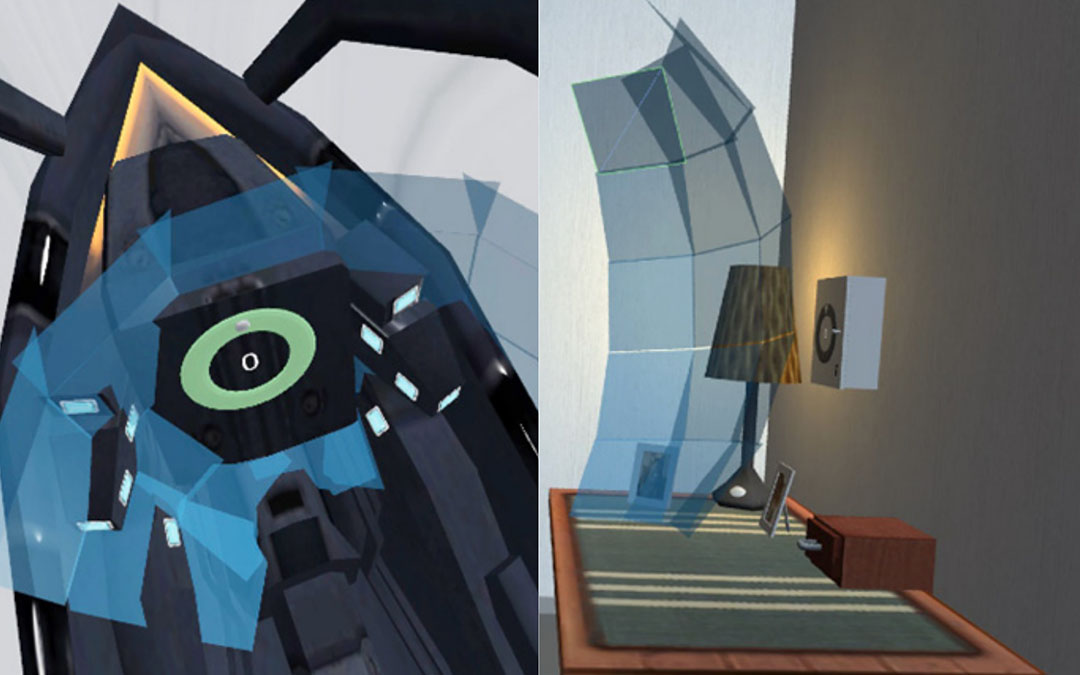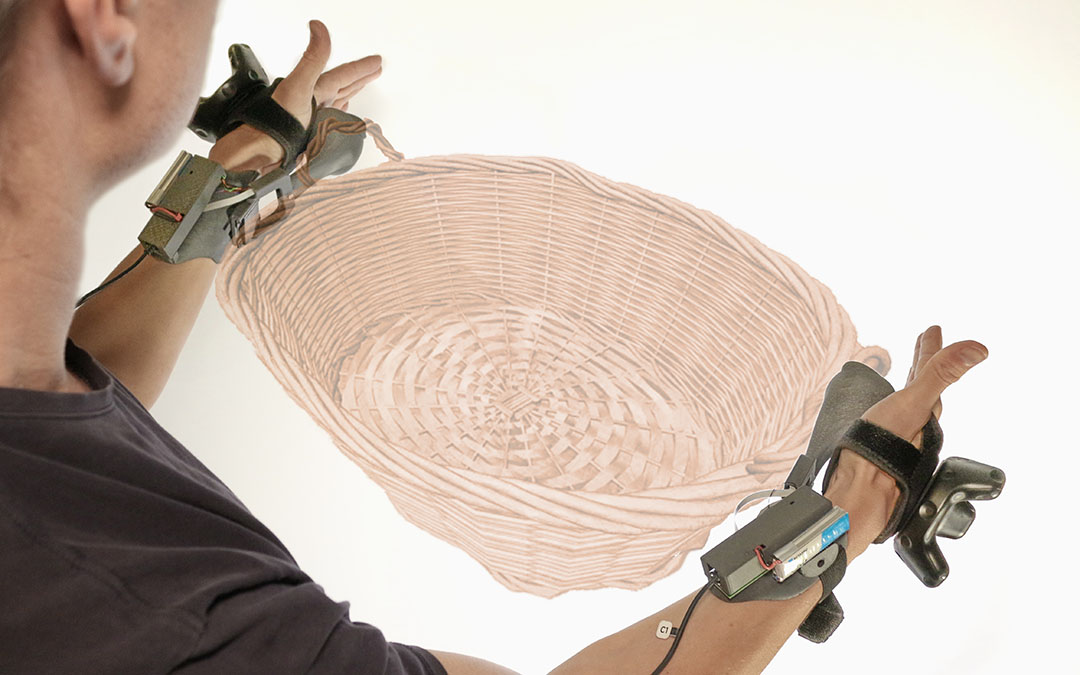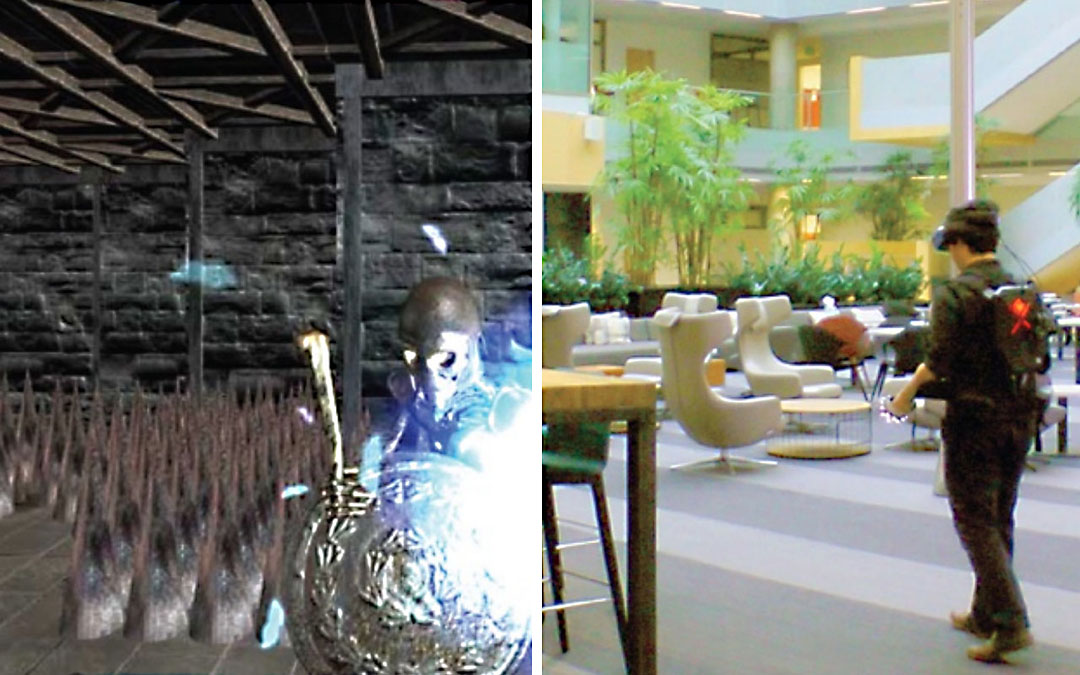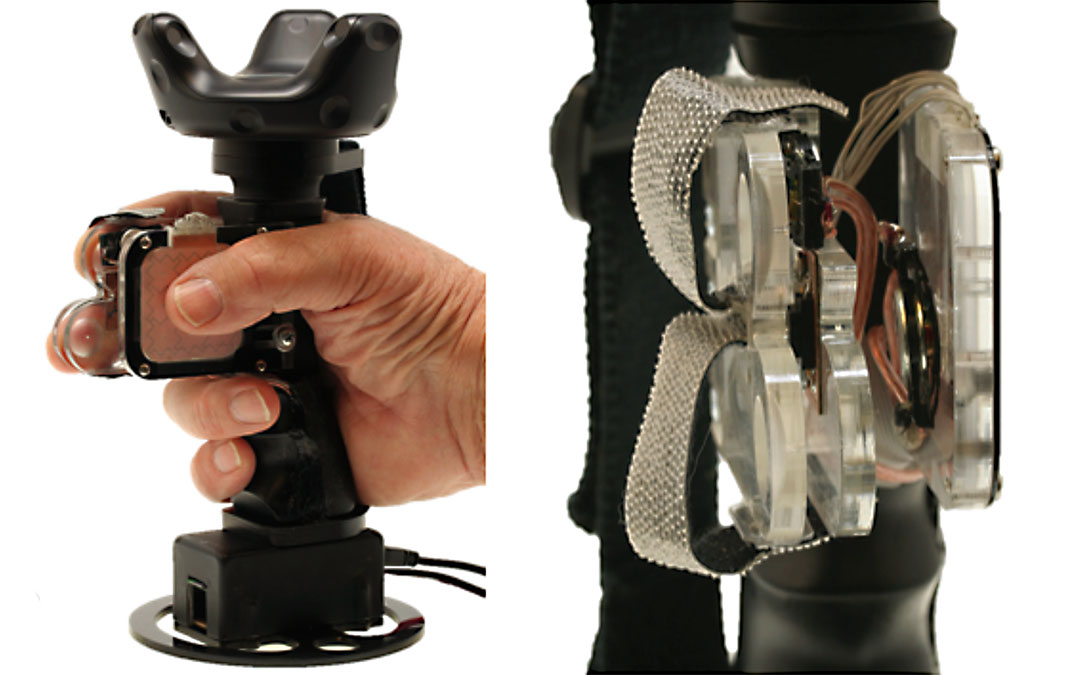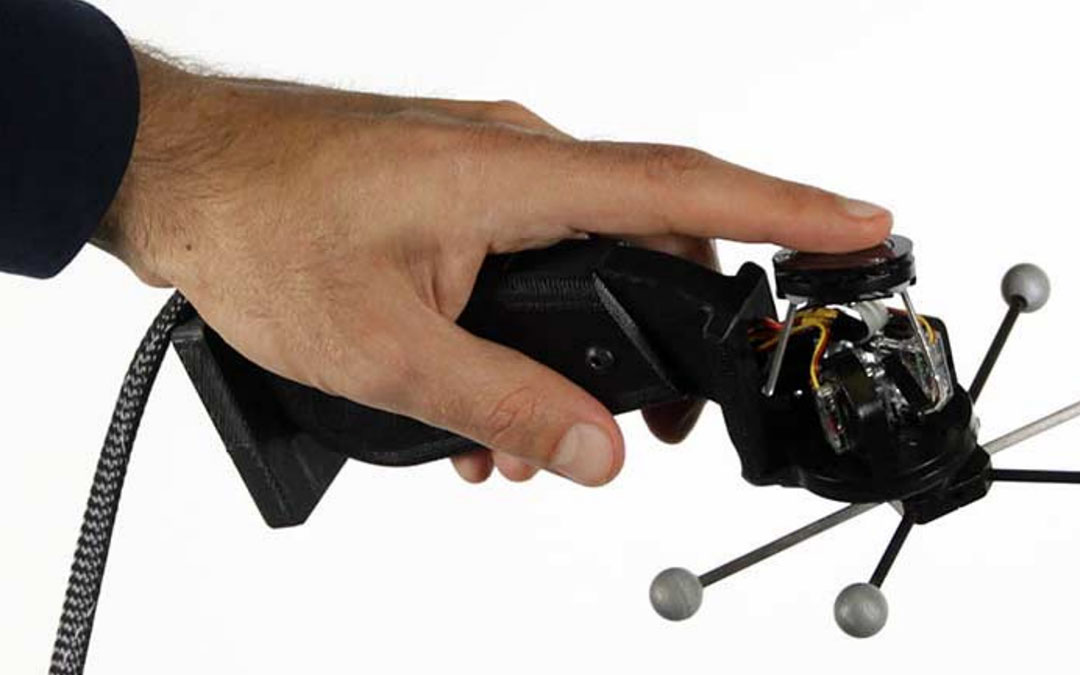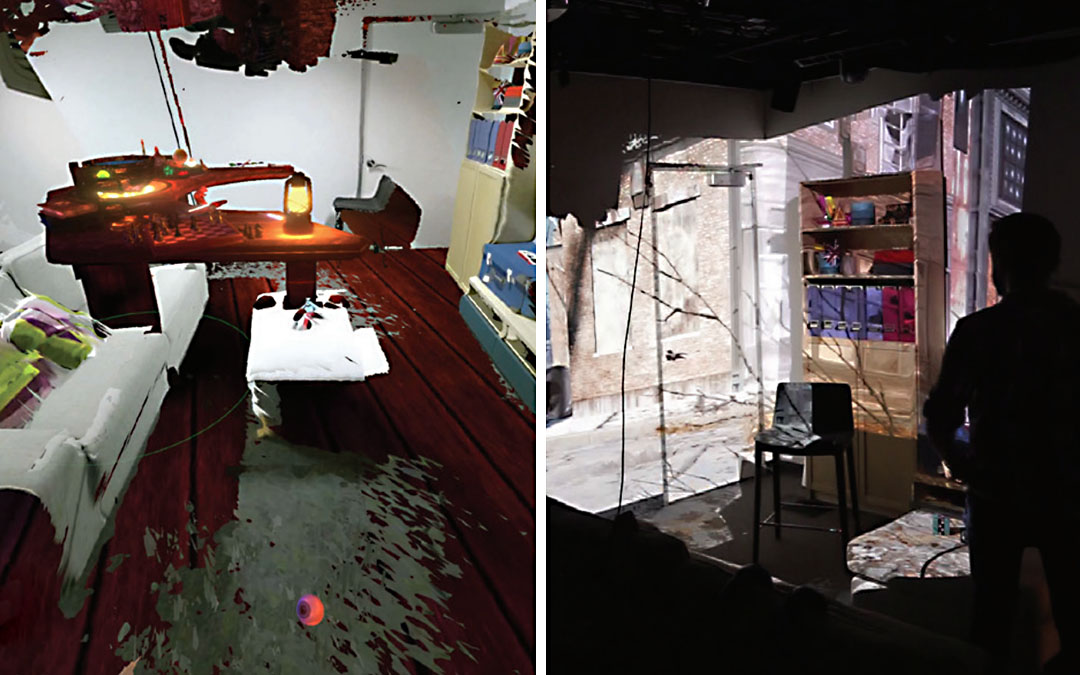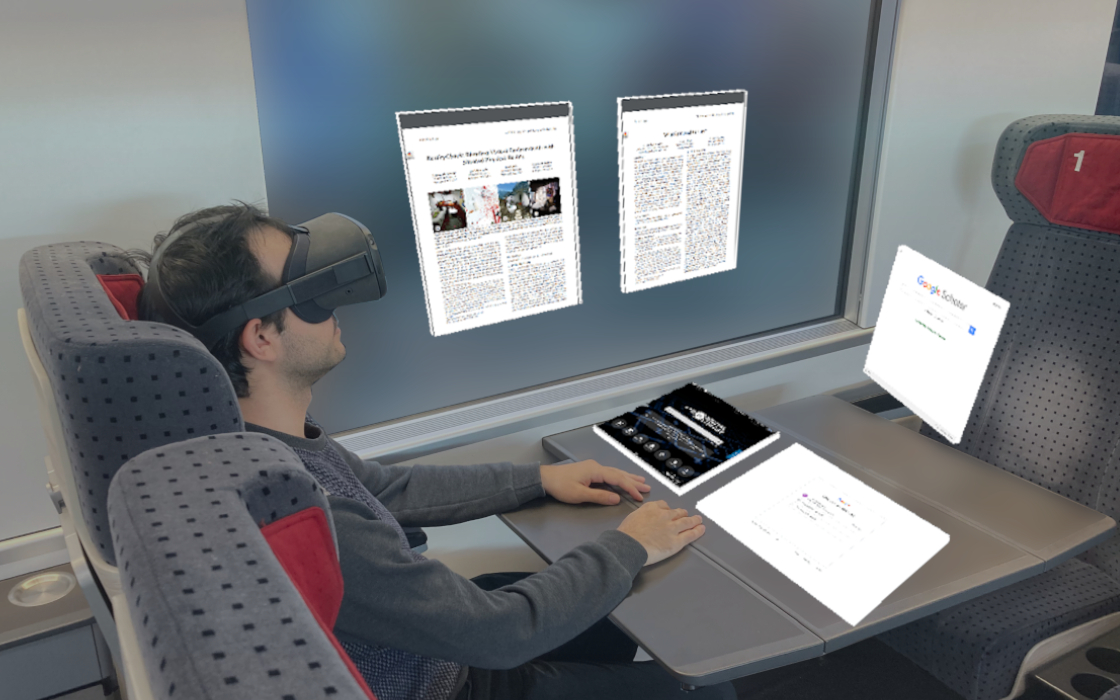Sparse Haptic Proxy
Touch Feedback in Virtual Environments Using a General Passive Prop
ACM CHI 2017Abstract
We propose a class of passive haptics that we call Sparse Haptic Proxy: a set of geometric primitives that simulate touch feedback in elaborate virtual reality scenes. Unlike previous passive haptics that replicate the virtual environment in physical space, a Sparse Haptic Proxy simulates a scene’s detailed geometry by redirecting the user’s hand to a matching primitive of the proxy. To bridge the divergence of the scene from the proxy, we augment an existing Haptic Retargeting technique with an on-the-fly target remapping: We predict users’ intentions during interaction in the virtual space by analyzing their gaze and hand motions, and consequently redirect their hand to a matching part of the proxy. We conducted three user studies on our haptic retargeting technique and implemented a system from the three main results: 1) The maximum angle participants found acceptable for retargeting their hand is 40°, rated 4.6 out of 5 on average. 2) Tracking participants’ eye gaze reliably predicts their touch intentions (97.5%), even while simultaneously manipulating the user’s hand-eye coordination for retargeting. 3) Participants preferred minimized retargeting distances over better-matching surfaces of our Sparse Haptic Proxy when receiving haptic feedback for single-finger touch input. We demonstrate our system with two virtual scenes: a flight cockpit and a room quest game. While their scene geometries differ substantially, both use the same sparse haptic proxy to provide haptic feedback to the user during task completion.
Video
Reference
Lung-Pan Cheng, Eyal Ofek, Christian Holz, Hrvoje Benko, and Andy Wilson. Sparse Haptic Proxy: Touch Feedback in Virtual Environments Using a General Passive Prop. In Proceedings of ACM CHI 2017.
